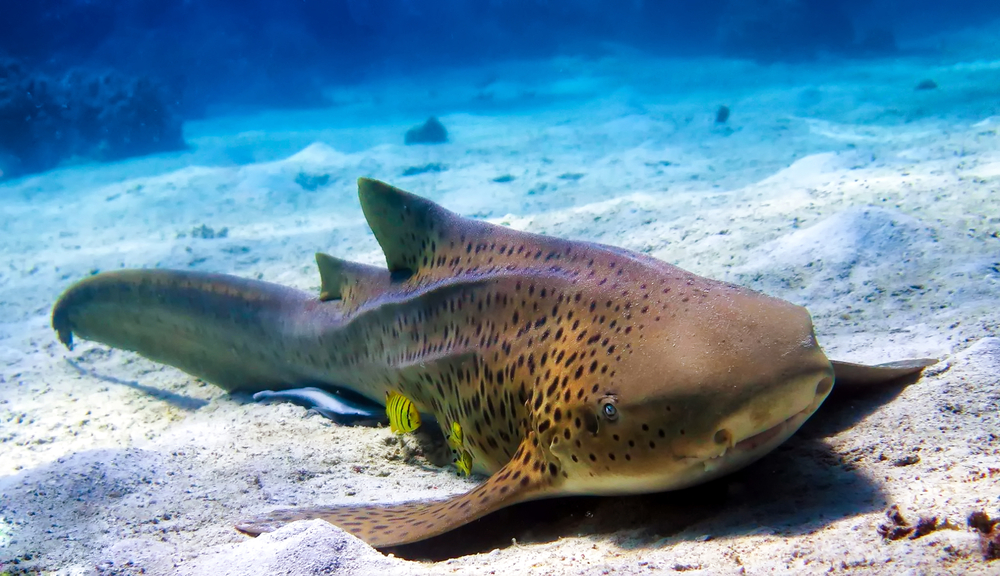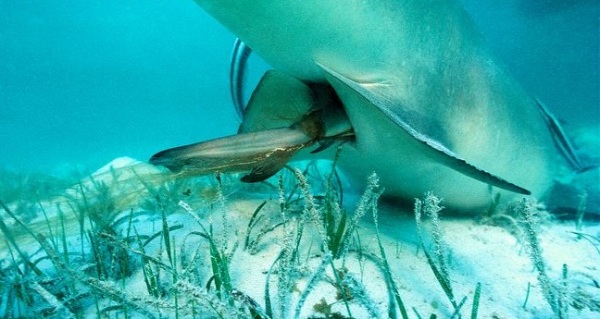

Parthenogenetic offspring in species that use either the XY or the X0 sex-determination system have two X chromosomes and are female. If meiosis occurs, the offspring will get only a fraction of the mother's alleles since crossing over of DNA takes place during meiosis, creating variation.
Zebra shark asexual reproduction full#
Full clones are usually formed without meiosis. In some types of parthenogenesis the offspring having all of the mother's genetic material are called full clones and those having only half are called half clones. Depending on the mechanism involved in restoring the diploid number of chromosomes, parthenogenetic offspring may have anywhere between all and half of the mother's alleles. Haploid individuals, however, are usually non-viable, and parthenogenetic offspring usually have the diploid chromosome number. Normal egg cells form in the process of meiosis and are haploid, with half as many chromosomes as their mother's body cells. This type of reproduction has been induced artificially in a few species including fish, amphibians, and mice.


Parthenogenesis occurs naturally in some plants, algae, invertebrate animal species (including nematodes, some tardigrades, water fleas, some scorpions, aphids, some mites, some bees, some Phasmatodea and parasitic wasps) and a few vertebrates (such as some fish, amphibians, reptiles and birds ). In algae, parthenogenesis can mean the development of an embryo from either an individual sperm or an individual egg. In plants, parthenogenesis is a component process of apomixis. In animals, parthenogenesis means development of an embryo from an unfertilized egg cell. Parthenogenesis ( / ˌ p ɑːr θ ɪ n oʊ ˈ dʒ ɛ n ɪ s ɪ s, - θ ɪ n ə-/ from the Greek παρθένος, parthénos, 'virgin' + γένεσις, génesis, 'creation' ) is a natural form of asexual reproduction in which growth and development of embryos occur in a gamete (egg or sperm) without combining with another gamete (e.g., egg and sperm fusing). tigris (right), which hybridized naturally to form A. Only time will tell how well these homozygous zebra shark offspring fare.The asexual, all-female whiptail species Aspidoscelis neomexicanus (center), which reproduces via parthenogenesis, is shown flanked by two sexual species having males, A. Laying inviable eggs is one thing (think chickens), but laying viable eggs means these females were undergoing asexual reproduction as confirmed by genetic tests which showed the hatchlings were homozygous. While asexual reproduction in itself is not unusual, switching from sexual to asexual reproduction in Leonie's case (and most mammals) is quite unusual. Amazingly, both Leonie and Lolly have produced five hatchlings. After her mate was removed from the tank to prevent further breeding, she has shared the tank with one of her offspring, a female named Lolly who, since reaching sexual maturity herself, has never lived with a male zebra shark. By 2008, she had started laying eggs and the pair had multiple litters of offspring through sexual reproduction. In 2006 she was transferred to Reef HQ Aquarium in Queensland, Australia where she met her mate. The story begins in 1999 when Leonie, a zebra shark (aka a leopard shark in Australia), was captured from the wild. Photo of one of Leonie's hatchlings from Tourism and Events Queensland.


 0 kommentar(er)
0 kommentar(er)
